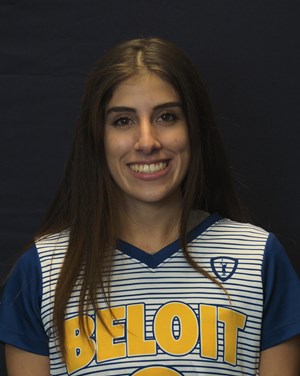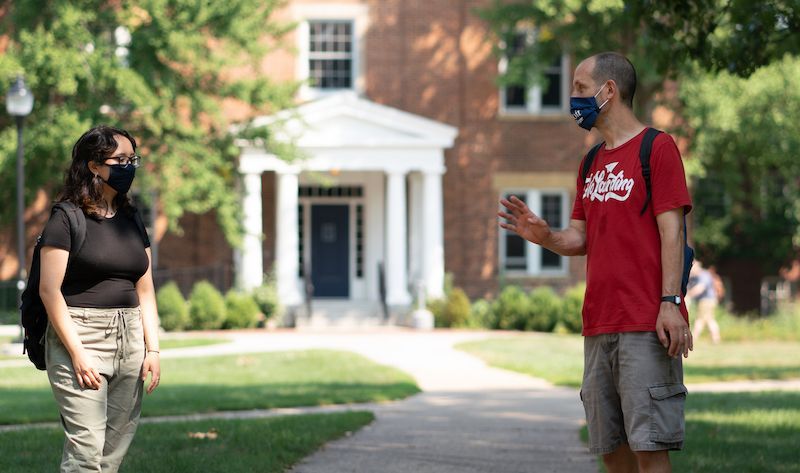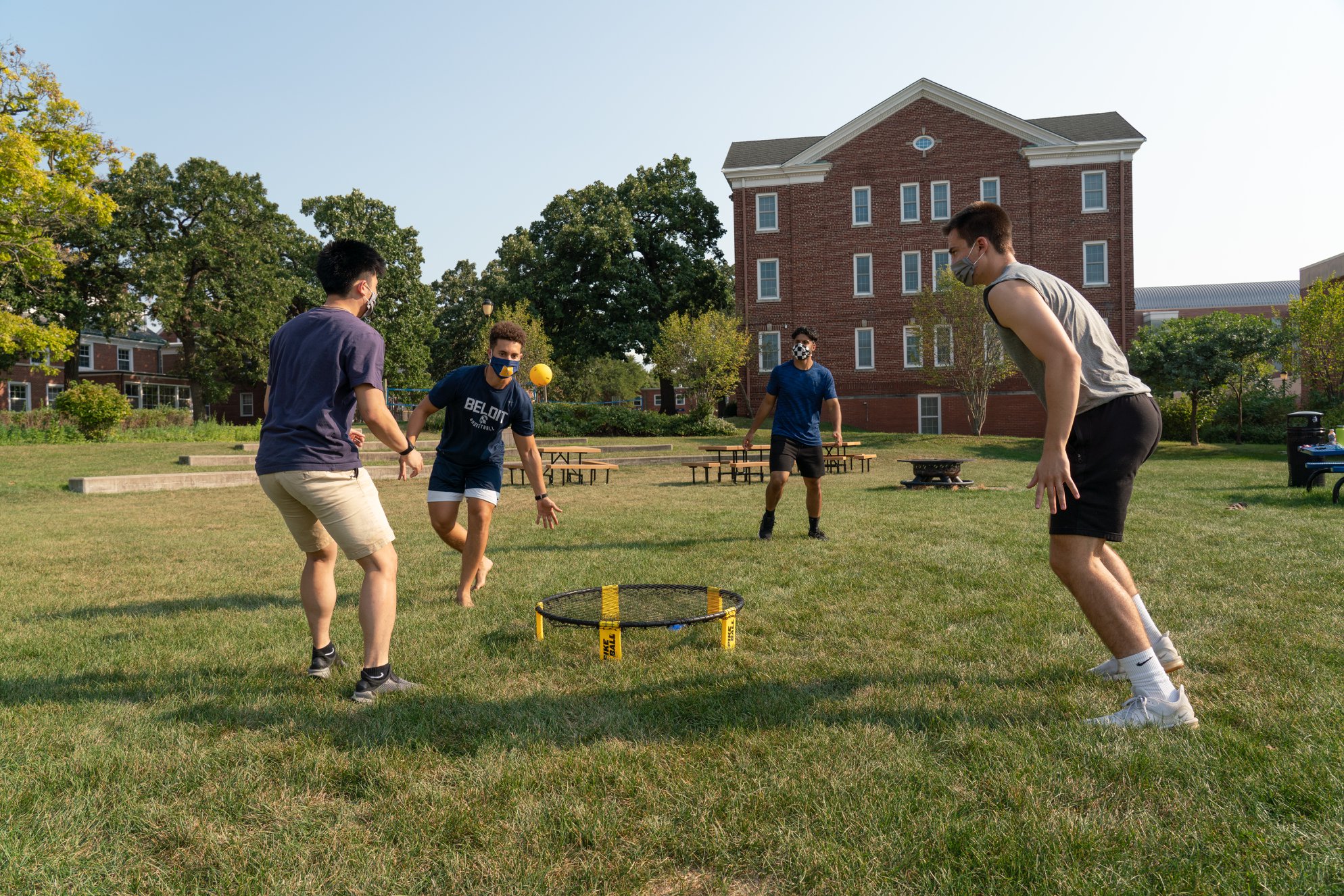Beloit College sits about an hour south of one the nation’s top party schools, the University of Wisconsin-Madison.
Beloit is not that. It is a small private liberal arts college boasting just over 1,200 students. Prior to the pandemic, there were no mass tailgating events here or huge weekend gatherings. That said, campus life wasn’t boring either. Like most college students across America, these Buccaneers found ways to celebrate together.
So when COVID-19 started to surge through the Badger State – becoming a national hot spot and a powder keg for political wrangling – leaders at Beloit created a task force to look at how to safely and effectively blend strategies with the students it serves.
The least obvious answer – but the choice Beloit went with – was to put the task in the hands of students. Young leaders effectively would be overseeing their classmates in one of the most important on-campus initiatives in 2020. What could go wrong?
How about nothing.
As Tara Girard, director of Beloit’s Health and Wellness Center said, “Just like if you want kids to eat their vegetables, you have them help you grow them in the garden.”
So the college farmed out this mission to its student leaders – anchored by student government presidents Saad Ahsan and Pathik Rupwate. The population of 18- to 20-somethings listened and learned, adhering to messages delivered by those they respect – leaders of clubs, leaders of sports teams and leaders of Greek organizations. And because students have followed their advice, Beloit’s relatively open residential campus has remained free of COVID outbreaks.
“Coming from student leaders, I think it makes a different impact,” Ahsan says. “The fact that we’re on campus is a privilege. Not a lot of students in the world right now are getting to have that. The real experience [of being at college] comes from being on campus, so that motivation is really what’s pushing us to follow the guidelines. I think a lot of students recognize that they need to do that for the campus to be able to function.”
How the plan came together
Back in March, Beloit administrators met to discuss a number of topics. Among them was the issue of student oversight. Girard said the task force was in agreement from the start to let the students take control. With a small campus and a solid connection to its student leaders, Beloit felt more comfortable than most larger colleges or universities in turning the responsibility to them.
Still, Girard points out, “at no point did we abdicate the rulemaking to them – that was still done by the task force and by administration. But we said you need to figure out how you live within these rules and really craft those norms and the statement of culture and the behavioral expectations that allow you to communicate with each other, to keep us all on campus.”

Ahsan and Rupwate went to work, connecting with various stakeholders across campus. They enlisted the help of senior Seva Poitevin, who constructed the framework for the thorough but not overwhelming behavioral guidelines. Among them, a section on partying that was a little more accommodating than the average shutdown response from other institutions during the pandemic.
“Telling college students not to party or putting a ban on everything would encourage parties that wouldn’t be safe,” Poitevin said. “They’d be completely unregulated, inside and very secretive. With us students leading the efforts, we’re helping create a culture where you follow the rules.”
Girard agreed, saying, “pretending it’s not going to happen because we say it’s dangerous is ridiculous.”
The behavioral pact offered up to students contains more than simple do’s and don’ts on partying and gathering. It includes standard messaging on social distancing and hygiene and also has sections relevant to students, some that might not be addressed in other institutions’ recommendations, such as:
- Dating, hugging and physical intimacy
- Smoking and where and where not to blow your smoke
- Voting
- Ordering food and groceries safely
- Sports, weight rooms and intramurals
- Greek rush events and community service
One of the key components of the plan, Ahsan says, was having communication and open dialogue among students. In its messaging from various leaders, students emphasized the importance of being able to tell others when they’re feeling uncomfortable about potential COVID-19 breaches, such as social distancing.
“We wanted to create a culture where it’s OK to want to tell the other student I don’t feel safe being this close or to be able to tell the person, ‘how about you do this just to make me feel more safe,” he says.
Putting it all together
The campaign came together with a blitz of targeted on-campus messaging that included posters, outreach through social media and at events. Infographics have been a key visual that have resonated with students, according to Ahsan and Girard.
“I think the many ways in which they were able to distribute the information was great,” Girard said. “Saad and Pathik did such a good job of choosing student leaders for the group. And then there’s all this great visual stuff reminding people that say, ‘Mask up Beloit’ and ‘Have the Statement of Culture’, and ‘Wash Your Hands.’ We’re a big sticker culture here, so we printed out a bunch of stickers. Just different ways to get it in front of students that I think has been really effective.”
Although the campaign has worked for Beloit, could this strategy be replicated at other colleges and universities, particularly those of larger scope?
“I think everyone could adapt something like this to their culture, to how their college works and make it successful,” Ahsan says. “A major part of it goes towards college administration, college leadership and understanding how their institution works. Why this plan really worked for Beloit was that there was an understanding of the role student leaders play. For other universities, I think the plan would have to be altered according to their campus culture.”
At Beloit, it helped to be tight-knit, but it also helped that its messaging reached receptive students.
“I think being small has been an advantage; I think a lot of people know each other,” Girard says. “What really bonded everyone together is the desire to be here and stay here. Our dean of students, Cecil Youngblood, has said very wisely, would you rather be six feet apart or 600 miles apart? The thing I hear consistently from students is, ‘I’m so happy to be back at Beloit and I just want to be able to stay’.”
Chris Burt is a reporter and editor for University Business. He can be reached at [email protected]







